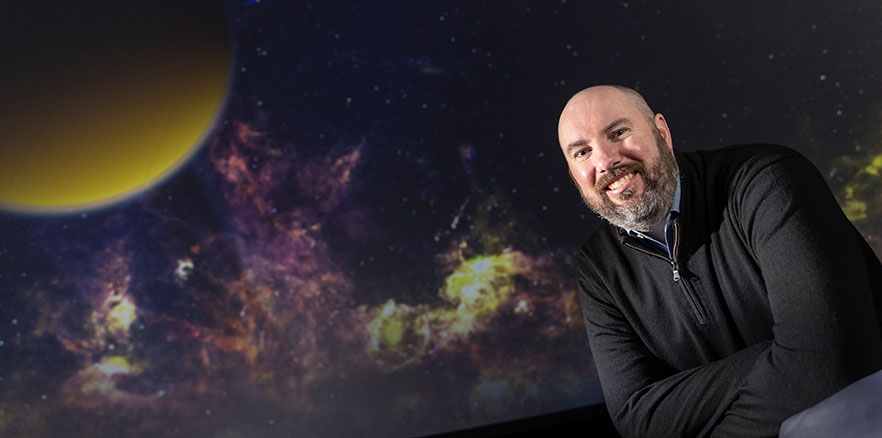
Dr Courtney Ennis is looking to Titan for some answers.
University of Otago astrochemist Dr Courtney Ennis (Chemistry) and his team are looking to Titan to understand more about the evolution of molecules pivotal for the formation of life.
At first glance it is hard to see what Titan, Saturn's largest moon, could teach us about the origin of life on Earth.
With lakes of liquid methane several hundred metres deep and an ambient temperature of about minus 179 degrees Celsius, it is far from the green-blue globe that we think of as home.
But at some time in the distant past similar conditions may have generated the building blocks of life here.
“We know that Earth is a world of complex chemistry where life has altered its environment, but Titan is an untouched laboratory that in many ways could mimic an early Earth,” Ennis explains.
“It has a sustained atmosphere driving a meteorological cycle that has carved a surface through methane rains and erosion, unquestionably a dynamic landscape.
Such hydrocarbon rains then pool into standing liquids on the surface which is, as far as we know, unique amongst other planetary bodies.”
Ennis says the NASA and ESA Cassini-Huygens spacecraft mission from 2004-17 did a magnificent job detailing the chemical composition of Titan's atmosphere and identifying the formation of aerosol particles and condensed liquid droplets.
“So that's where we come in and try to simulate atmospheric chemical processes in the laboratory to better understand if more complex organic molecules – such as those involved in biological systems – are generated in Titan's environment. Perhaps, if delivered to the surface, these organics can be altered into more advanced chemical systems in Titan's lakes.”
Our understanding of Titan will be taken to a whole new level with NASA's NZ$1.26 billion Dragonfly mission, which will blast off in 2027 and arrive at Titan in 2034 for a three-year surface mission using a drone to sample the chemistry of Titan and send data back to Earth.
In the meantime, an $875,000 Marsden Fund grant will allow Ennis and his team to work with the Australian Nuclear Science and Technology Organisation (ANSTO) and NASA's famous Jet Propulsion Laboratory at Pasadena in California to investigate potential chemical targets for Dragonfly to unearth.
“We have a time window to optimise our laboratory studies and tease out various chemical reactions unfolding on Titan. We then hope to provide background data and predict what organics may be found in the atmosphere and surface for Dragonfly to then validate our findings,” says Ennis.
To develop those predictions they are effectively recreating Titan in a vacuum-tight reaction chamber. This vessel will allow them to take the temperature down to about -200 degrees Celsius to produce aerosol particles.
These materials can then be exposed to UV light and other high energy radiation sources to simulate Titan astrochemistry.
“It is this harsh energy environment that initiates the breaking and reforming of chemical bonds where ultimately we hope to identify species such as nucleobases, being the molecular framework of DNA.”
Funding
Royal Society Te Apārangi Marsden Fund
Recent awards
Australian Research Council Discovery Early Career Research Award (2015)
More stories about early career researchers
This story is part of the research publication 'He Kitenga 2022: Talented Futures', which presents the different pathways into research that early career researchers follow.
